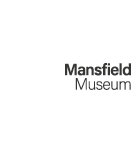A Stitch in Time
A Stitch in Time
Victorian cross-stitch samplers

The museum collection includes a number of ‘samplers’ – examples of needlework often made by young girls in the 19th century as part of their education. Some of these samplers were displayed in 2024 in an exhibition of costume and textiles called “Threads of Time”. While researching for the exhibition, we found out a bit more about these fascinating objects.
The earliest samplers seem to have been used to keep a record of different sewing techniques and embroidery stitches. Later, when printed books became cheap and easy to get hold of, it was less important to save examples in fabric. Samplers were still created, though - as practice pieces, teaching aids, or evidence of the skill of the stitcher.
Embroidery was seen as a useful and appropriate skill for young girls to learn, and a sampler was a good way to show that they had mastered it. Almost all surviving samplers seem to have been made by girls. Early samplers include a variety of different stitches but by the mid-19th century, most samplers were worked entirely in cross-stitch (each ‘stitch’ is actually two diagonal stitches, forming a cross).
One of the great things about samplers is that they usually include the name of the maker, and often their age, their location, or the date of completion. This gives us a glimpse of the lives of girls who might otherwise be completely invisible in our histories.
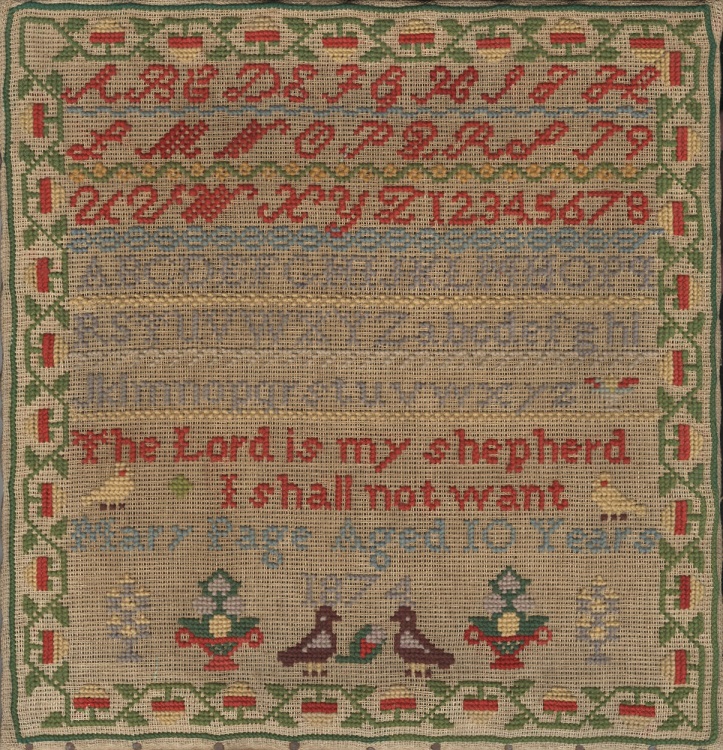
Mary Page
One of our best-preserved samplers was stitched by Mary Page in 1874, when she was 10 years old. It is a band sampler, with a border of vines, featuring alphabets in both cursive and block text, a bible quote, and decorative patches of birds and lamps.
The UK census records show a girl named Mary Page who was born in Kirkby-in-Ashfield in 1864. At the time of the 1871 census, she was 7 years old and living with her parents John (born in 1836 in Normanton, Derbyshire) and Ann (born Ann Harris in 1840 in Kirkby). Her elder brother Soloman (aged 10), sister Elizabeth (aged 9) and little brother George (aged 2) were also living in the house.
When the next census was taken on 3rd April 1881, Ann, then aged 17, was still living with her parents. Not for long, however! On 10th September that year she married Arthur Wharmby, who was 22 at the time. They went to live in Annesley Woodhouse, and the family can be found there in the census returns of 1891, 1901, and 1911.
Mary and Arthur had at least six children: Henry (born about 1885), George (1886), Amelia (1888), Tom (1892), Ethel K (1893), Eveline (1903), and Mary Elizabeth (1906). There may, of course, have been other children too, but these are the ones which were living in their house on the dates of the census. The 1911 census also shows that their son George had married; he and his wife Hannah (born Hannah Bale, around 1884) were living with Mary and George, and had a daughter of their own, Florence Maude, who had been born the year before.
It is difficult to be certain that this is the Mary Page who made the sampler which is in our collection, but the dates match, and Kirkby-in-Ashfield is close enough that it would make sense for her descendants to give the sampler to our museum. It was donated in 1985 by a Mrs M. E. Scott from Sutton-in-Ashfield. Sadly, we don’t know if she was related to Mary Page.
Other Victorian Stitchers
The other samplers in our collection don’t include as many pieces of information as Mary Page’s embroidery. We have therefore not been able to find any more details of the stitchers’ lives. In some ways, though, this makes them even more fascinating and important, as the only link we have to these girls.
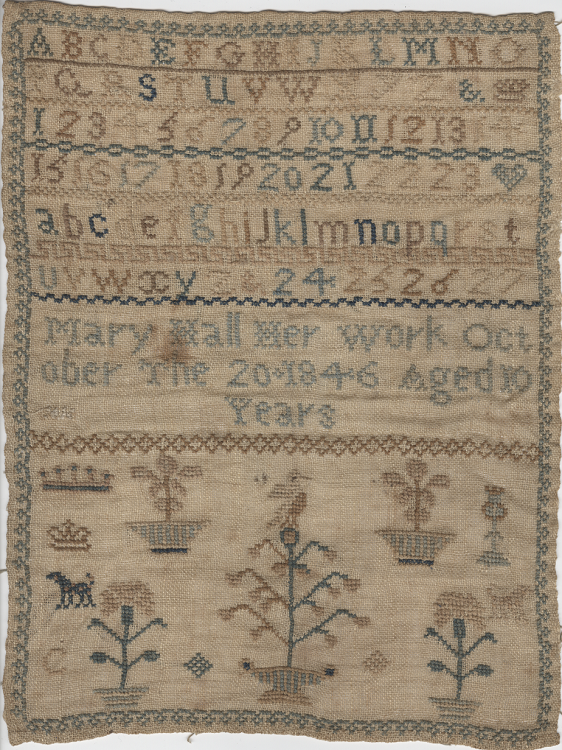
“Mary Hall, her work, October the 20. 1846 Aged 10 years”
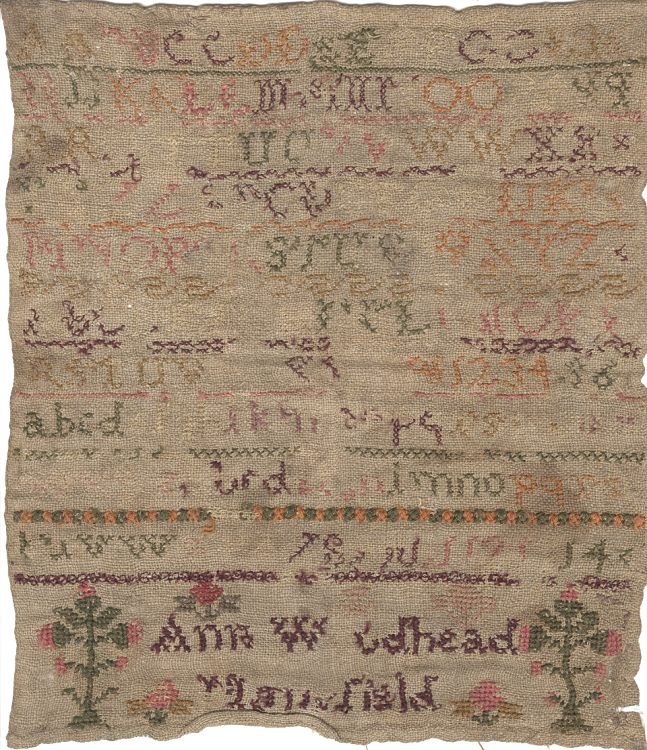
“Ann Woodhead, Mansfield”
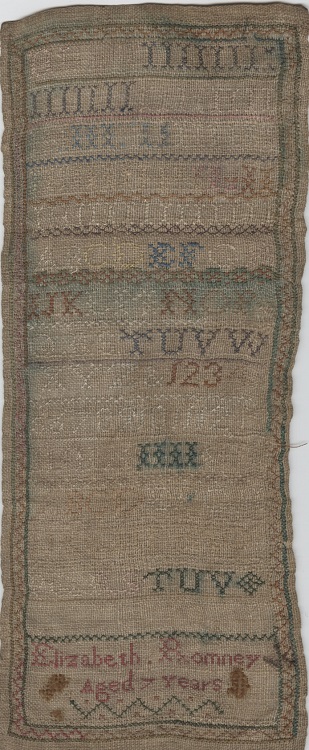
“Elizabeth Romney Aged 7 years”
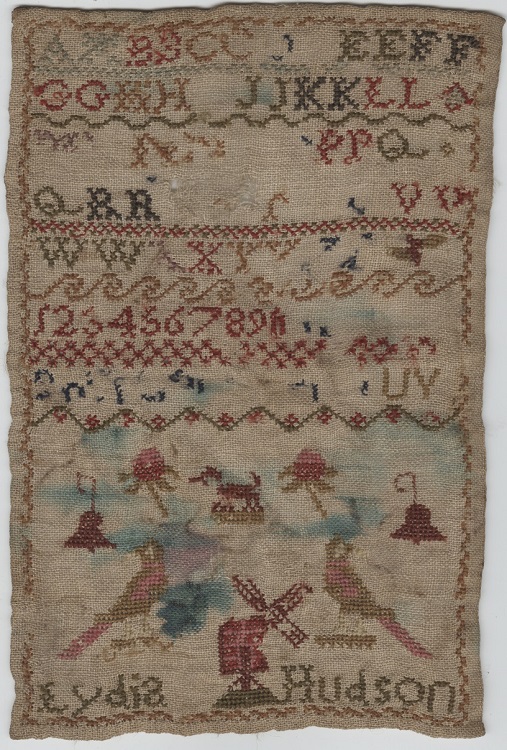
“Lydia Hudson”
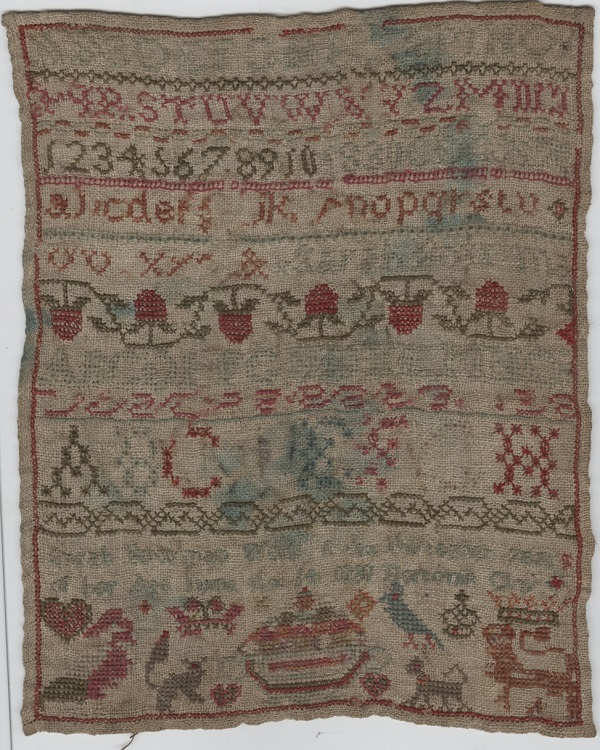
Sarah Page?
The colour of the threads in this sampler has faded over time, and the pale blue text in the bottom panel is now almost illegible. The first word seems to be Sarah, and the next may be Page, so we’ve recorded the maker of this embroidery as Sarah Page, although we can't be certain of her name or details. There does also seem to be a date worked in this panel. It might be 1889, but again we can't be certain. It is frustrating to have this tangible link to the maker of this sampler, with tantalising clues to their identity just out of reach!
Find Out More
You can find out more about these samplers, together with patterns for making your own copies of them, in the booklet ‘Mansfield Museum Samplers’, available from the museum shop.
For more information about the history of samplers, as well as some wonderful examples, this page from the Victoria and Albert Museum is a great read: Embroidery - a History of Needlework Samplers
Anja Thompson-Rohde, Collections and Interpretation Officer
